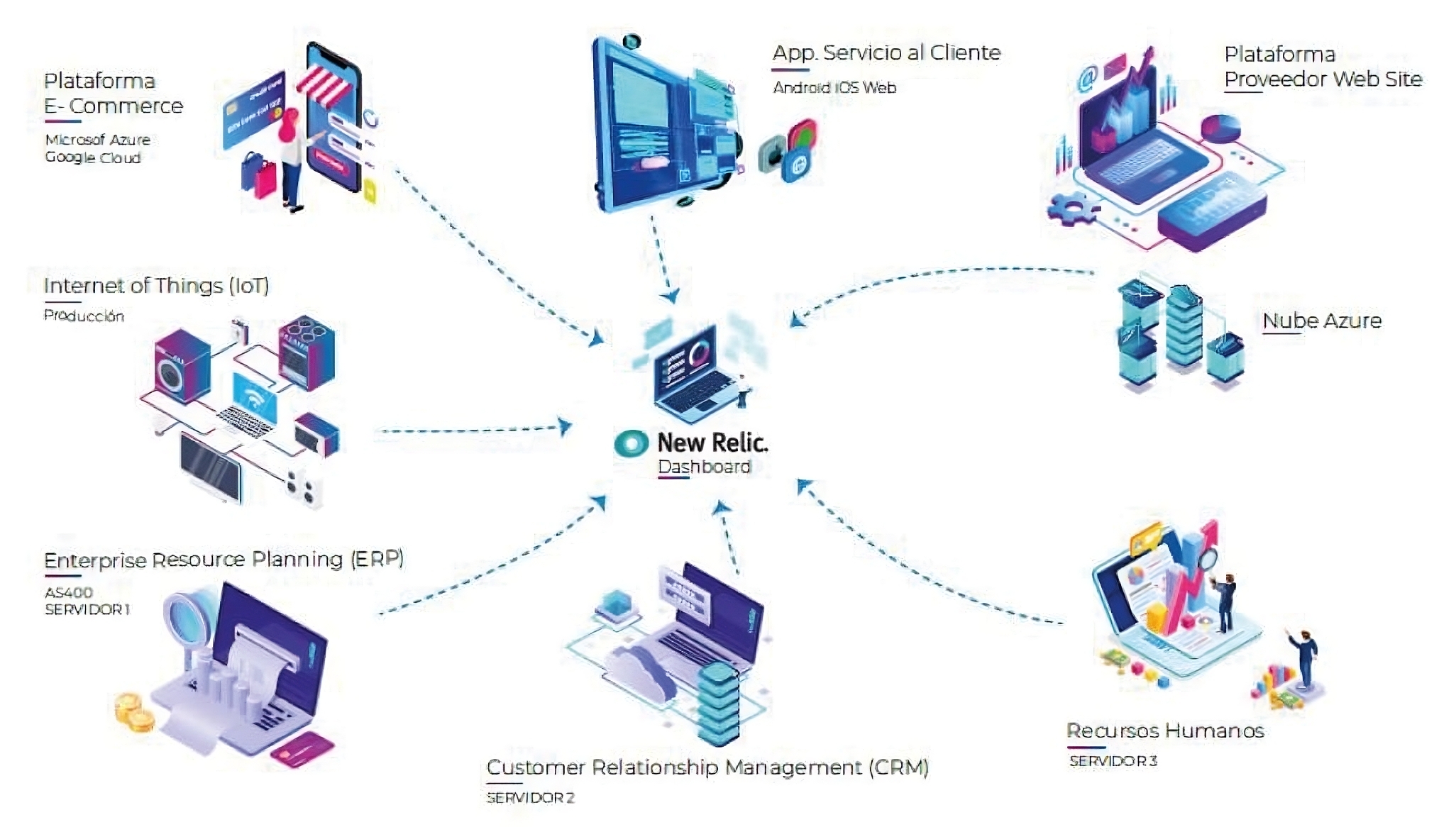The instrumentation and observability of your business data allow you to make assertive decisions in real time.
Currently, companies generate a large amount of data during their operations that can be leveraged; with Instrumentation and Observability, there is the possibility to examine in real time the performance of the infrastructure of technological platforms or information systems and correlate that information with business variables, optimizing each operation.

instruments
Operations use various tools — in some cases systematized — that facilitate processes and activities. We refer to these tools as instruments.
In practical terms, instruments generate key information to measure, describe, and define the behavior and performance of the business’s operational variables. Furthermore, the systems used — such as software, ERP, apps, webapps, analytics, CRM, among others — can be exclusive to a specific area or shared across the organization. However, within operations, it is common to implement specific tools that, being designed for particular tasks, significantly expand the functional scope of the corresponding area or process.
What does instrumentation mean?
Essentially, it is about interconnecting all the operations of an organization; that is, integrating the technology of information systems into a single ecosystem through digital pulses. This allows real-time monitoring of behavior, performance, functionality, and even lines of code.
This involves not only exercising control but also accessing the centralized knowledge of operations. Moreover, this knowledge must be capable of receiving, interpreting, and interconnecting data quickly, enabling informed decision-making and innovation based on fully updated results. These results are presented instantly through tools like flash boards, dashboards, or speed boards.
This is how we work with instrumentation at Wigilabs using New Relic.

In real time, we precisely identify opportunities for improvement, sales growth, cost and expense optimization, efficiencies, and increased operational speed, all aimed at generating greater value and agility.
We collect, centralize, correlate, and use information from the origin of each point in your operation through various methods to measure the profitability and efficiency of your systems.
Strategic Pathway to Connected Digitalization
Applying these strategies and becoming a Fast Company involves much more than adopting technology: it means having the ability to monitor every part of the business, connect all systems, and make them work as a single unit. The result is real-time control, powered by software, that allows the company to move faster, make better decisions, and scale intelligently.
We identify the digital capabilities of your operations currently.
We identify which digitalizations are connected to the cloud.
We successfully instrument digitalized operations + Connected to the cloud.
Access not only the cloud but also advanced tools like New Relic
We analyze your objectives, understand products or services through data, and discover how they are affected, with the goal of digitalizing operations.
When operations are instrumented, it is also possible to instrument leadership management.







